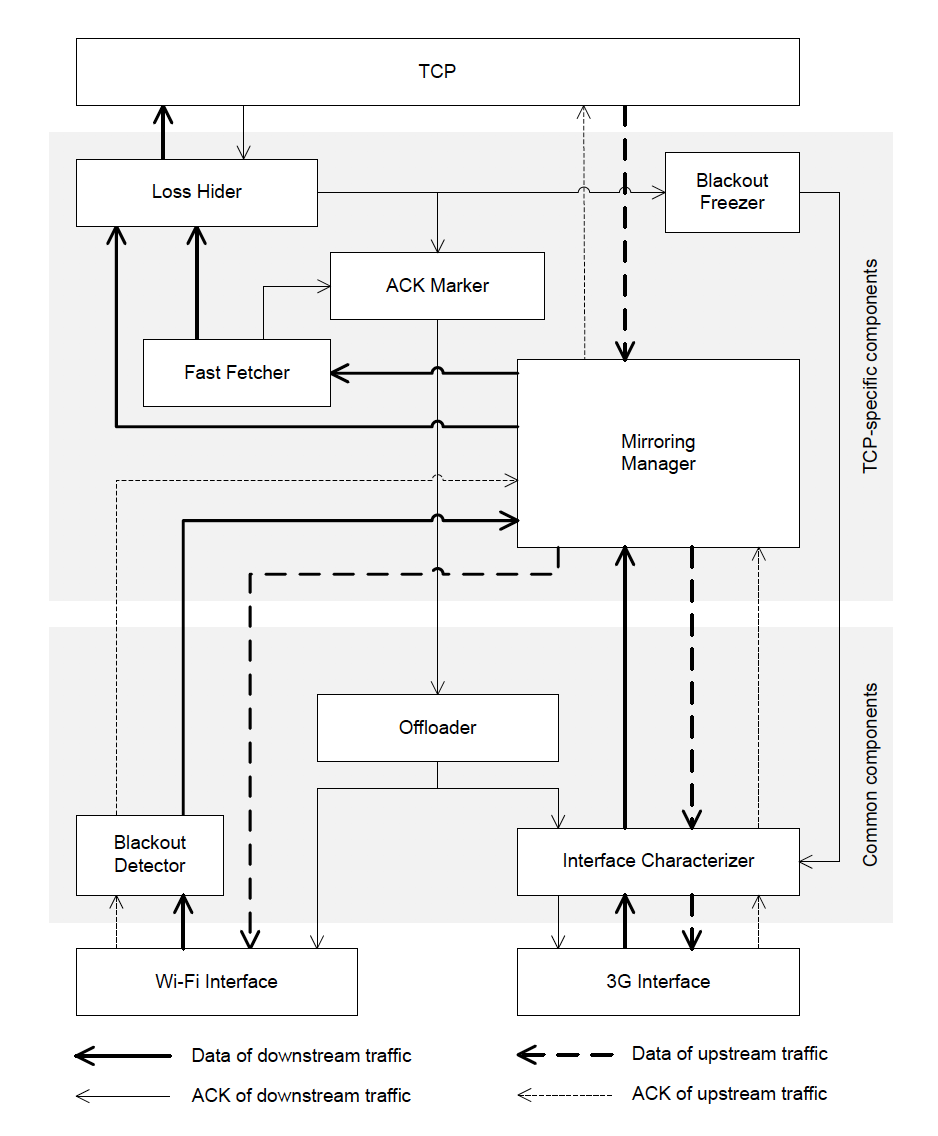This wireless interface aggregation system addresses the need for performance improvements for mobile devices with multiple heterogeneous wireless connections, such as Wi-Fi®, Bluetooth®, and cellular networks. Referred to as super aggregation, Georgia Tech’s solution enables mobile device wireless interfaces to achieve better performance when used simultaneously than each would achieve on its own—in effect, an aggregate performance improvement greater than the sum of its parts. The solution specifically addresses transmission control protocol (TCP) acceleration, which aims to achieve better throughput on network connections without the need to modify end user applications.
Georgia Tech’s solution is made up of three super aggregation principles. First, the solution takes advantage of the fact that, even when each interface may have relatively small bandwidth, selectively offloading some portions of its transferred data can have a positive impact on wireless performance. In addition, the solution uses proxying to improve the overall performance of data transfer and to ensure that critical control information relating to transmission data on the first wireless interface can be transmitted by the second wireless interface. Finally, the solution employs intelligent mirroring of some portions of data being transferred on interfaces with comparatively lower bandwidth, thereby improving perceived performance.
- Performance-improving: Improves the aggregate performance of multiple heterogeneous wireless interfaces used simultaneously compared to the performance each could achieve on its own
- Proven: Indicates TCP acceleration achieved in wireless data networks when tested on two mobile platforms, including a laptop computer and an Android™ mobile phone
- Impactful: Addresses the performance improvement needs of ubiquitous, widely used mobile technologies
- Practical: Requires changes only to the mobile device, not to any communication end-points/applications
- Extensible: Applies specifically to TCP acceleration over wireless networks, but can also enable performance improvements for other applications and protocols
Georgia Tech’s super aggregation system is broadly applicable to mobile devices that use multiple heterogeneous wireless interfaces, and may also benefit other network applications and protocols as well.
- Smart phones, laptops, tablets, and other mobile devices
- Wireless local area networks (WLANs)
- Wireless mobile area networks (WMANs)
- Wireless wide area networks (WWANs)
- Wireless personal area networks (WPANs)
Mobile devices, including smart phones, laptops, and tablets, continue to evolve and grow in their capabilities and connectivity. Most of these devices are equipped with multiple heterogeneous wireless interfaces, and when they are in use at the same time, it is important to ensure high user-perceived performance (or at least no degradation in performance). For instance, many users will use a Wi-Fi network at the same time as relying on a Bluetooth connection to peripheral devices. Approaches to ensuring performance quality generally fall under the category of bandwidth aggregation. Many of these are simple aggregation, in which the bandwidth achieved is the simple sum of the bandwidths of the individual interfaces. Georgia Tech’s research has found that simple aggregation provides no meaningful benefits to end users. Their super aggregation solution responds to the need to increase perceived performance, providing a strategy that achieves higher performance than the sum of each interface’s bandwidth.
Wi-Fi is a registered trademark of the Wi-Fi Alliance.
Bluetooth is a registered trademark of the Bluetooth SIG, Inc.
Android is a trademark of Google LLC.

Data flow of Georgia Tech’s super aggregation solution architecture.
